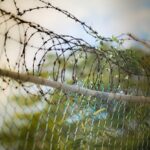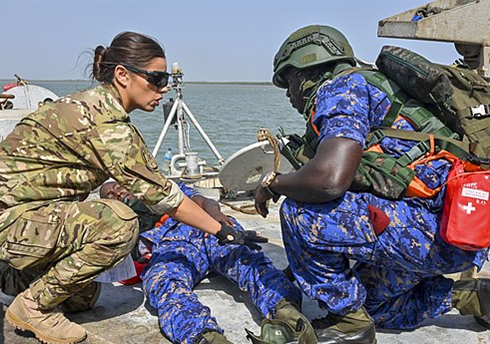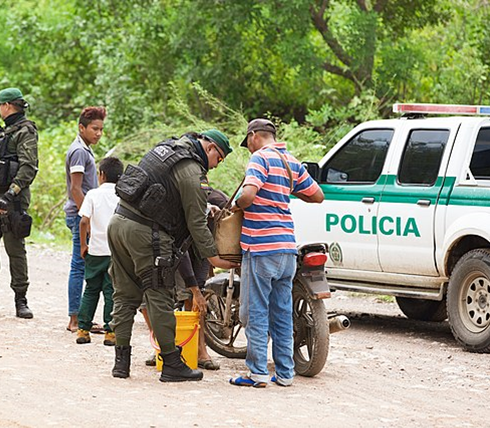The Crisis at the Pakistan-Afghanistan Border
Introduction
A
year and a half after the Taliban assumed control of Afghanistan, Pakistan reassesses its previous optimism of the takeover as conflict arose between the two nations. Many Pakistani officials, including members of its security establishment, showed an early enthusiasm for a Taliban-controlled Kabul, hoping to increase its influence within the country. [1] Pakistan looked to be on its way to gaining strength with its neighbors. With the Taliban, Pakistan believed there could be long-desired peace at the Durand Line, a resolution to the TTP problem, and a new anti-India ally within Southern Asia. [2]
However, since the U.S. withdrawal and Taliban entrance in 2021, Pakistan has not sighted its desired outcomes. Tension continues to rise as skirmishes at the border increase, and TTP-led attacks outpace their pre-2021 numbers. For Pakistan to succeed and move forward, it must be able to pacify conflict while satisfying the interests of its international partners, namely the United States and China.
Conflict at the Durand Line
The Durand Line, created in 1893 when Pakistan was still a part of India, continues to cause much conflict and controversy due to its division of major ethnic groups. On the one side, Pashtuns make up the largest ethnic group in Afghanistan. On the other, Punjabis are the largest ethnic group in Pakistan. [3] However, the creation of the Durand Line split the Pashtun people, leaving a large portion of them residing in what is now northwestern Pakistan. Since its founding in 1947, Pakistan recognizes the Durand Line as an internationally accepted and legally binding border. Afghanistan, however, argues the opposite. Even though Pakistan believed opinions might change with Taliban leadership, present actions appear to show no favor to Islamabad. [4]
In December of 2022, skirmishes broke out between the Taliban and Pakistan at the Chaman-Spin Boldak, the second busiest crossing between the two nations. Reports on the initiation of fire are conflicting, as Pakistani forces were repairing a fence when shots were fired, but blame was assigned to both sides. [5] Furthermore, during the week before this, eight Pakistani civilians were left dead after gunfire emerged near the same crossing. Until recently, the Pakistani government downplayed the conflict at the Durand Line, but the matter grew much too large to brush aside. In fact, these December attacks are not an outlier to the border relationship since the Taliban takeover in August of 2021. Pakistan’s Minister for Overseas Pakistanis and Human Resources noted this and tweeted, “Afghanistan’s violation of Pakistan’s Kurram border at Kharlachi and Borki and targeting the civilian population is condemnable.” [6]
Whatever optimism Pakistan initially held regarding peace at the line is quickly fading. Open removal of the border fence over the last year shows the Taliban is not satisfied with the current standing of the Durand Line, and Kabul has many allies in Pakistan that can assist in changing the circumstance. The terrorist group Tehrik-e Taliban Pakistan (TTP) is seeing a resurgence in activity and membership after the Pakistani Army forced it into relative submission in 2014. With upwards of 6,000 cadres, the Taliban has begun freeing high-ranking TTP officials and fighters previously imprisoned in Afghan government jails. [1]
Pakistan wrongly expected a Taliban-controlled Kabul to mediate peace talks between Pakistan and TTP
TTP and Its Future in Pakistan
Since its foundation in 2007, the TTP has maintained the twofold agenda of expelling Pakistani influence in the Khyber Pakhtunkhwa Province (Northwestern, Pashtun-controlled Pakistan) and implementing sharia law throughout Pakistan. [7] Within the last five years, the TTP further narrowed its focus, suggesting calculated endeavors against Pakistan in the future. In a 2018 memoir, the TTP reduced its priority to attacks against civilians and religious minorities. Instead, the Pakistani Taliban promoted directed attacks against military personnel and intelligence community members. Again, in 2020, the TTP reinforced its focus on Pakistan, laying waste to any agenda outside the country. The terrorist group removed from its manifesto mentions of global support for acts of terror when it had prior emphasized such operations. [8]
The TTP’s strategic decisions came at a time of heightened tension between the group and the Pakistani military. In late November of 2022, the Pakistani Taliban terminated its five-month ceasefire with Islamabad and increased its assault on the country. Just days after this announcement, a suicide bomber attacked the Balochistan Province, killing three and injuring more than two dozen. [6] Pakistan has seen the number of terrorist attacks within its borders increase by 51% in the last year, even with the five-month ceasefire taking place during that time. [9]
Pakistan wrongly expected a Taliban-controlled Kabul to mediate peace talks between Pakistan and TTP. Times have changed. The Taliban has much to gain from assisting the TTP in violating the ceasefire and increasing attacks on Pakistan. First, the Taliban may use TTP strikes to retaliate for their conflict at the Durand Line. Pakistani security officials have described the two groups as “two faces of the same coin,” which accurately describes the mutual tension the Taliban and the TTP have toward Islamabad. [1] Secondly, the TTP has always had the goal of control in the Khyber Pakhtunkhwa Province, a heavily Pashtun and, therefore, pro-Afghanistan part of Pakistan. Back in 1947, after the establishment of Pakistan, Afghanistan called for that northwestern border territory to be made into an independent Pashtunistan, which would significantly increase the influence of Kabul. With the TTP escalating conflict with Pakistan, the Taliban can use this to extend its influence into territory it already believed was theirs.
What Does This Mean For The U.S.?
On December 14, 2022, General Erik Kurilla, the United States CENTCOM Commander, visited Pakistan to discuss opportunities to strengthen military relations and address the ongoing conflict at the Afghanistan-Pakistan border. [10] This meeting between senior military leaders highlights the ongoing support the United States has shown Pakistan since 1947 and its ability to make a difference in the conflict at the Durand Line. The Taliban has promised peace to those outside of Afghanistan and to the international community. [8] But how does this reflect the current situation in Pakistan? Increased attacks at the Durand Line and assistance to the TTP appear to nullify the agreement made by the Taliban, which could bring the United States into further involvement.
However, the likelihood of the United States being heavily involved in the conflict between the Taliban and Pakistan is relatively low. While the U.S. has been open to supporting Pakistan in its ongoing border crisis, the presence of China will likely deter any significant U.S. support of the Pakistani government. China is Pakistan’s most prominent financial supporter, developing the China-Pakistan economic corridor in 2015 to promote economic regionalization. If the United States were to get involved in Pakistan in any extended capacity, it would have to attempt to navigate the already established and strengthened China-Pakistan relationship. However, this is unlikely to occur as the U.S. is in a state of increased confrontation with Beijing. [11] The United States has the capability to put pressure on the Taliban and TTP, but it is likely not in its best interest to attempt to test its relations with China. With a divided state of international relations, Pakistan must be able to create peace itself with the Taliban and TTP.
[1] Clayton Thomas, “U.S. Military Withdrawal and Taliban Takeover in Afghanistan: Frequently Asked Questions,” Congressional Research Service, 17 September 2021, https://crsreports.congress.gov/product/pdf/R/R46879.
[2] Tilak Devasher, “Pakistan’s Taliban challenge: With over 100 attacks in two months, Islamabad faces grim security situation,” Firstpost, 17 January 2023, https://www.firstpost.com/opinion/pakistans-taliban-challenge-with-over-100-attacks-in-two-months-islamabad-faces-grim-security-situation-11998532.html.
[3] Mary Schons, “The Durand Line,” National Geographic, 01 July 2022, https://education.nationalgeographic.org/resource/durand-line.
[4] Sachin Khunte, “The Durand Line Impasse: The Two Talibans and Pakistan,” Australian Institute of International Affairs, 07 June 2022, https://www.internationalaffairs.org.au/australianoutlook/the-durand-line-impasse-the-two-talibans-and-pakistan/.
[5] Gul Yousafzai, “One dead as fresh clashes erupt between Afghan, Pakistani border forces,” Reuters, 15 December 2022, https://www.reuters.com/world/asia-pacific/one-dead-fresh-clashes-erupt-between-afghan-pakistani-border-forces-2022-12-15/.
[6] Vinay Kaura, “Pakistan-Afghan Taliban relations face mounting challenges,” Middle East Institute, 02 December 2022, https://www.mei.edu/publications/pakistan-afghan-taliban-relations-face-mounting-challenges.





